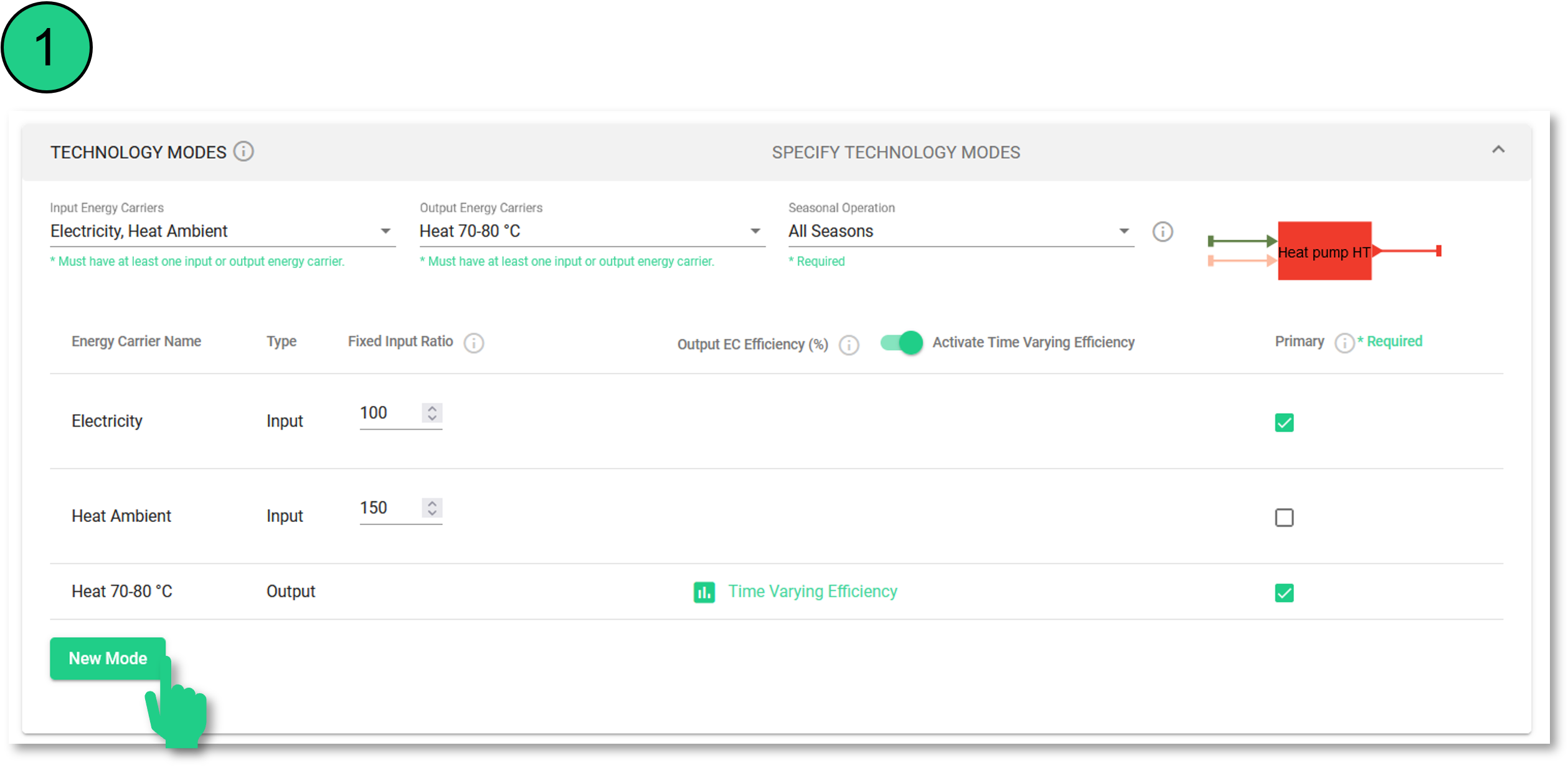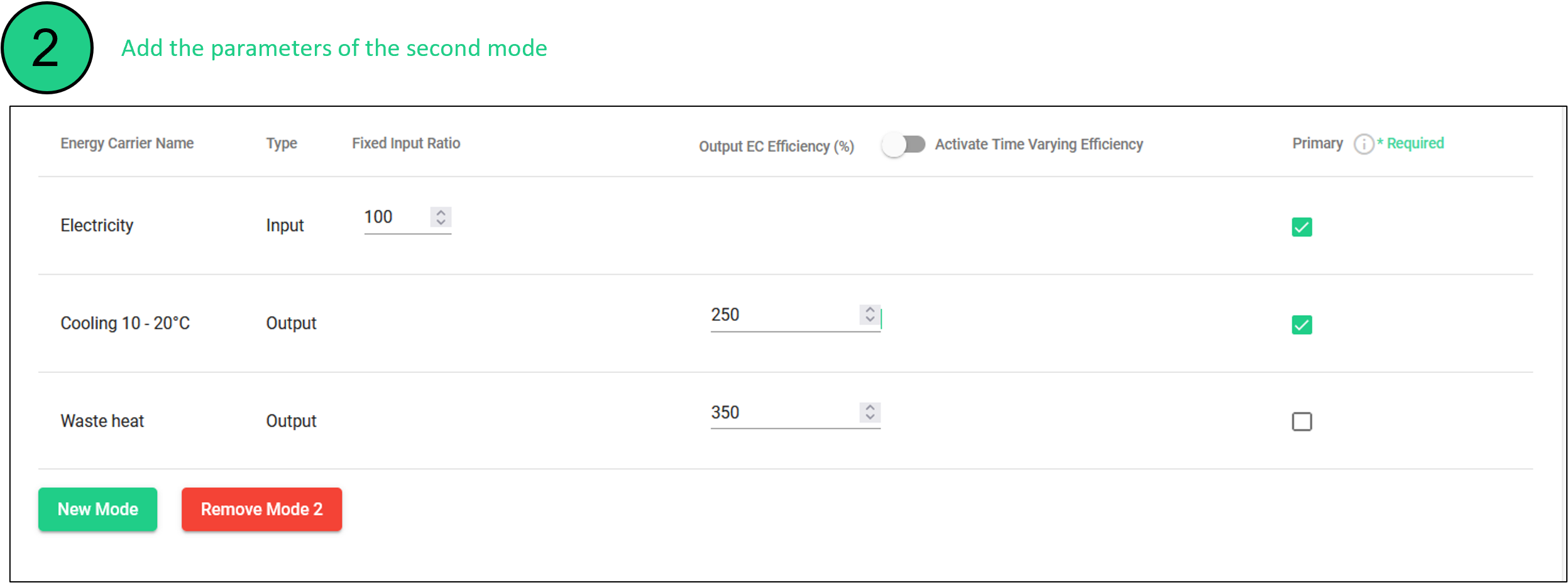Reversible Heat Pump
Let’s add a cooling demand to the standard heat pump system. In this case, the heat pump could be reversible, to be used as well for cooling. The modelling of a reversible heat pump follows the exact same principles as when modelling a heat pump with two modes for different temperature levels (see section 2.2.3 Heat pump with two modes).
Within Sympheny, modes can operate simultaneously during the same hour. If a capacity limit is set, this is valid for the sum of both modes over the hour. For a realistic operation, it is therefore strongly advised to integrate a heat storage (at least for one of the temperature levels). Notes: Modes of a technology can be spotted by their names: each mode has its mode number appended to the name of the technology (e.g. ‘Heat pump HT 1’ and ‘Heat pump HT 2’) are the operation modes of one single technology.

Figure 20 System diagram of a reversible heat pump
Video Tutorial
Set-up summary
Energy Carriers | Energy Demands | Imports | Exports | Supply technologies | Storage | |
HP mode 1 | HP mode 2 |
| ||||
Electricity |
| X |
| Primary Input | (primary) Input |
|
Heat ambient |
| X |
| Input |
|
|
Cooling | X |
|
|
|
|
|
Heat 70-80°C | X |
|
| (primary) Output | (primary) Output | X |
Waste heat |
|
| X |
| Output |
|
Set-up Implementation

Figure 21 Set-up and Implementation of a reversible heat pump
Define the energy carriers necessary (as displayed in the first row of the table table under the ‘set-up summary’ section). If the heat pump is already defined, you will only need the add cooling and waste heat as new energy carriers, when adding a cooling mode.
Add a mode to the heat pump and enter the input (electricity) and outputs (cooling and waste heat).
Do not forget to select your primary input and primary output.

Figure 22 addition of second mode to a reversible heat pump

Figure 23 Definition of energy carriers and efficiencies for a reversible heat pump.

Figure 24 Definition of export candidates for a reversible heat pump
